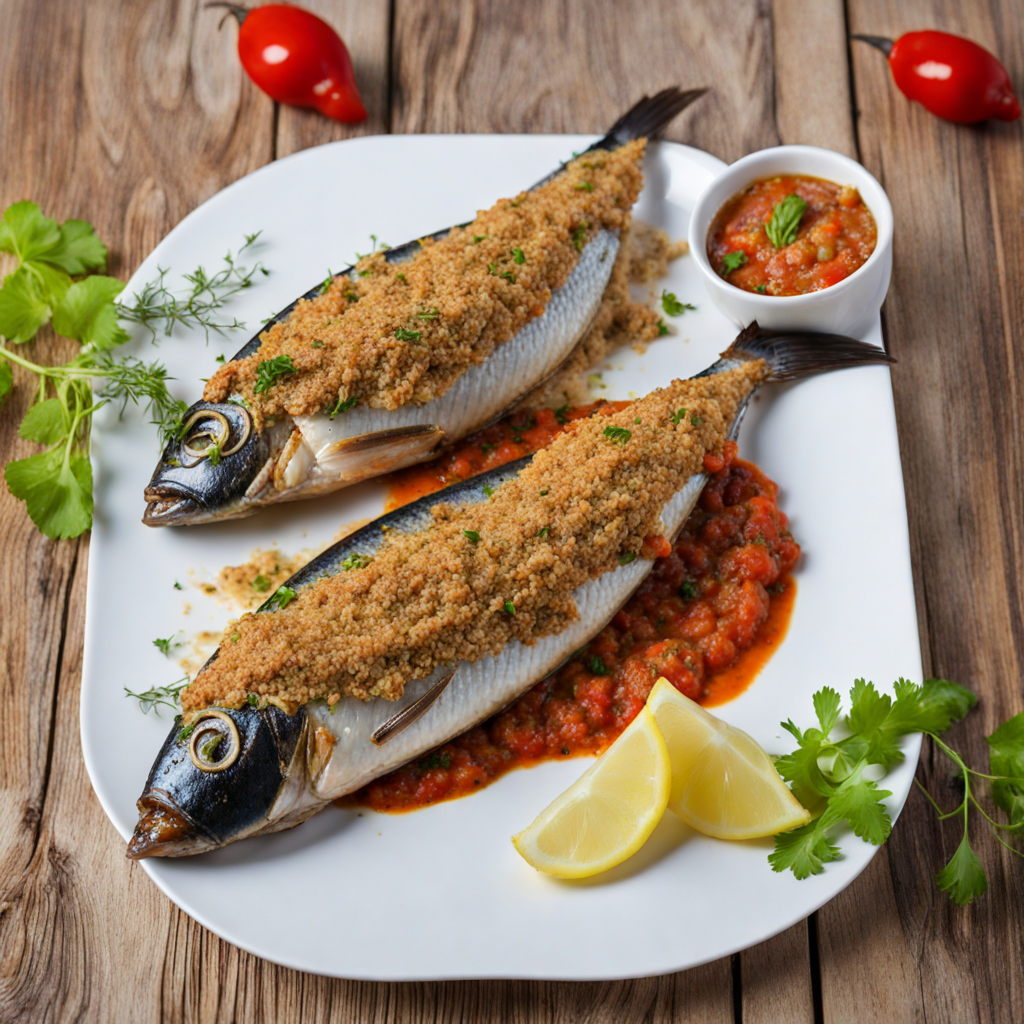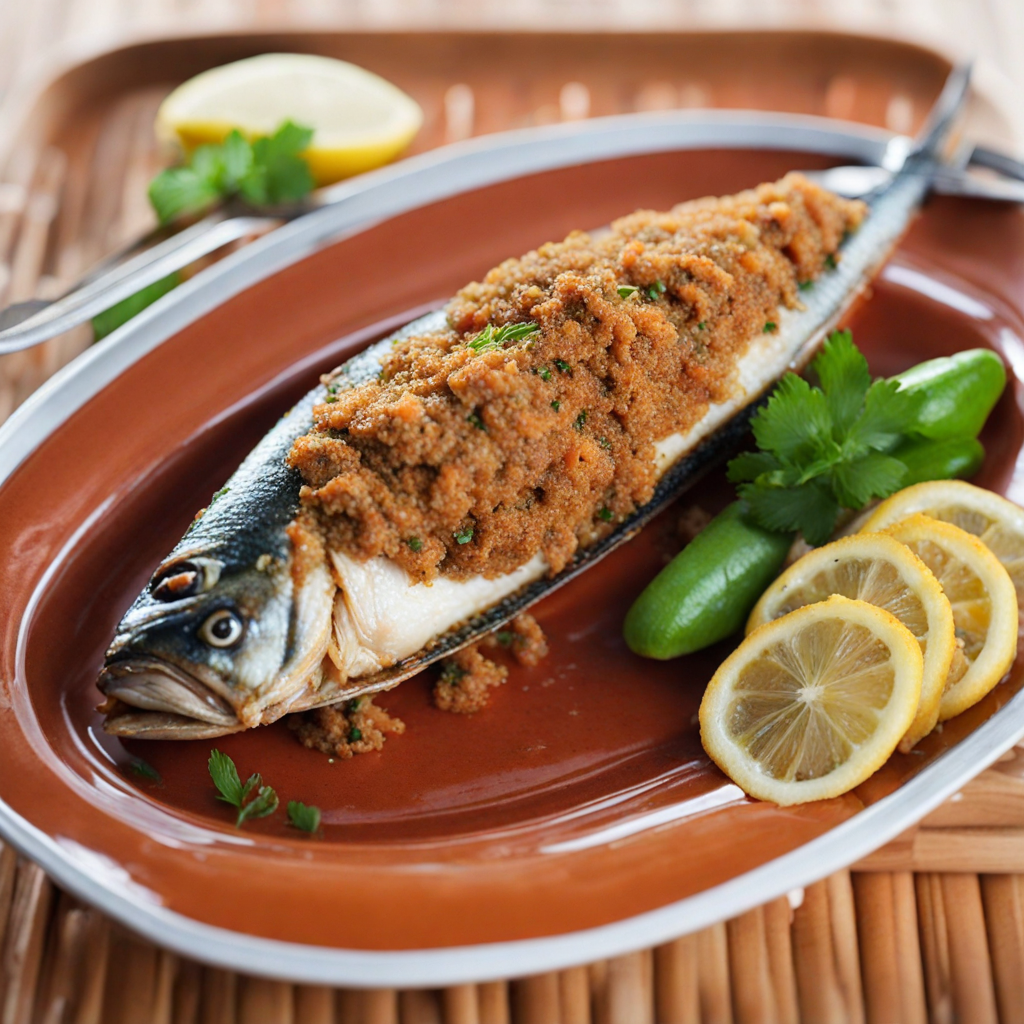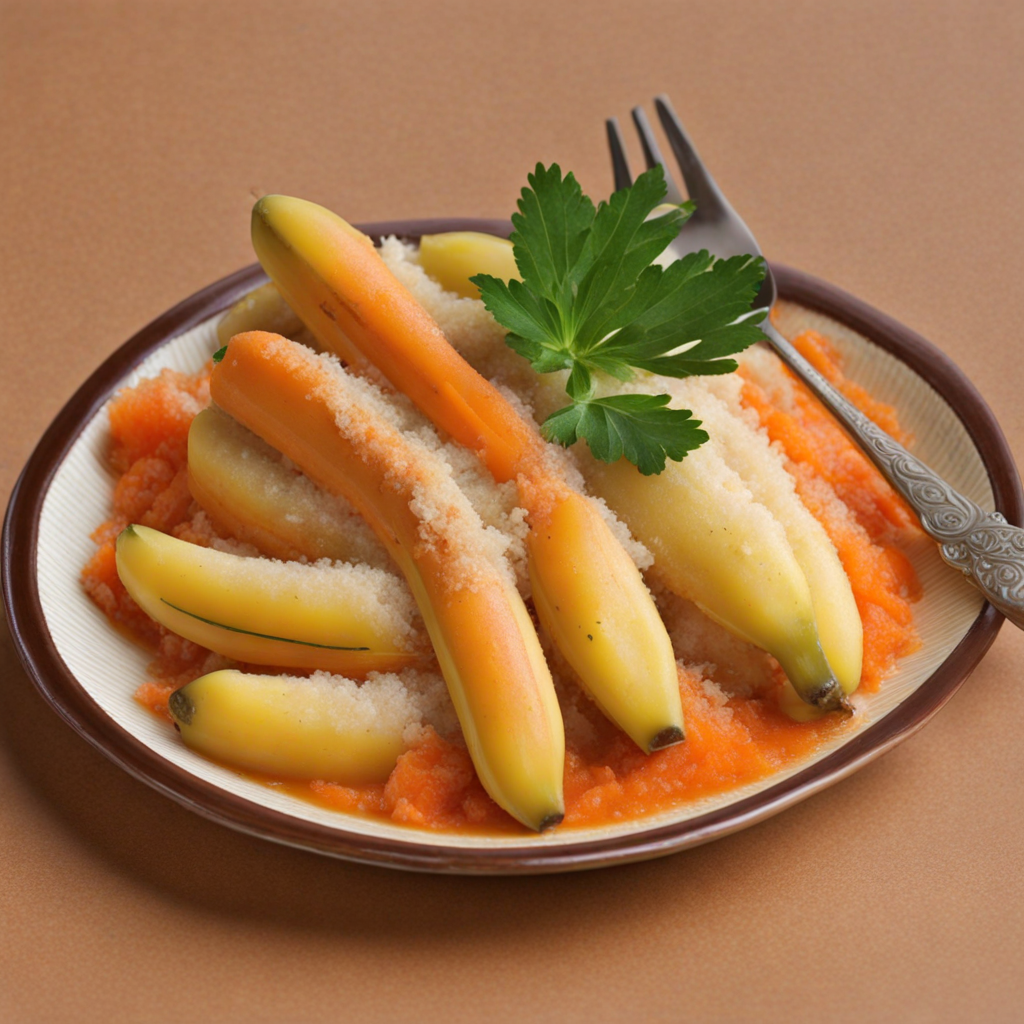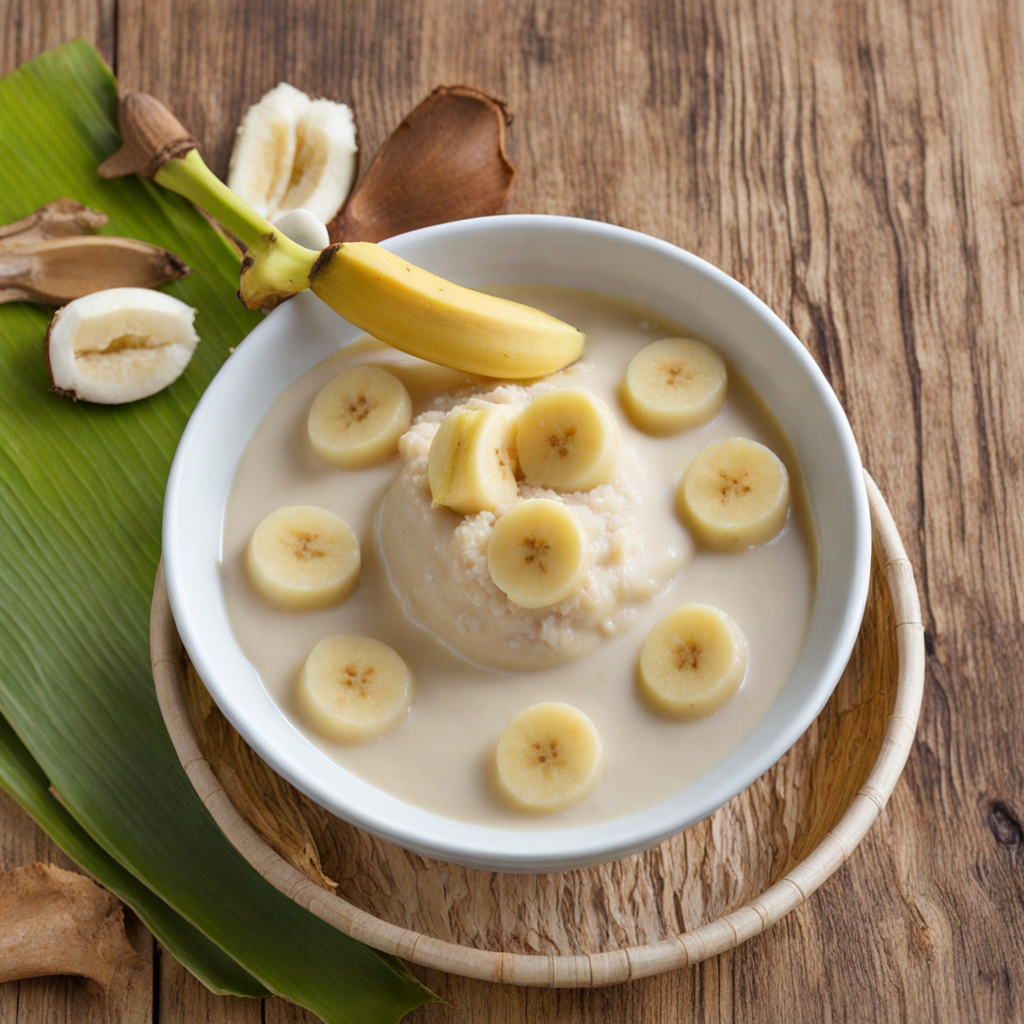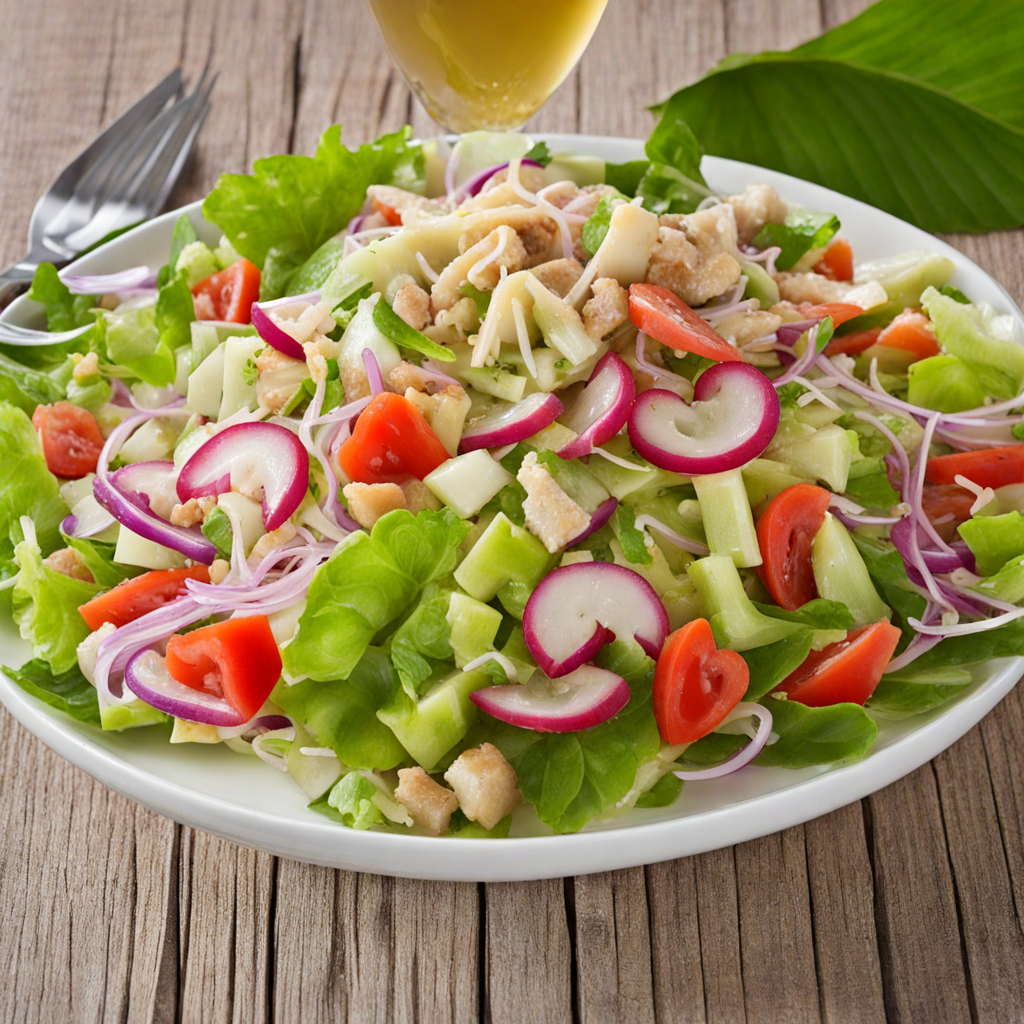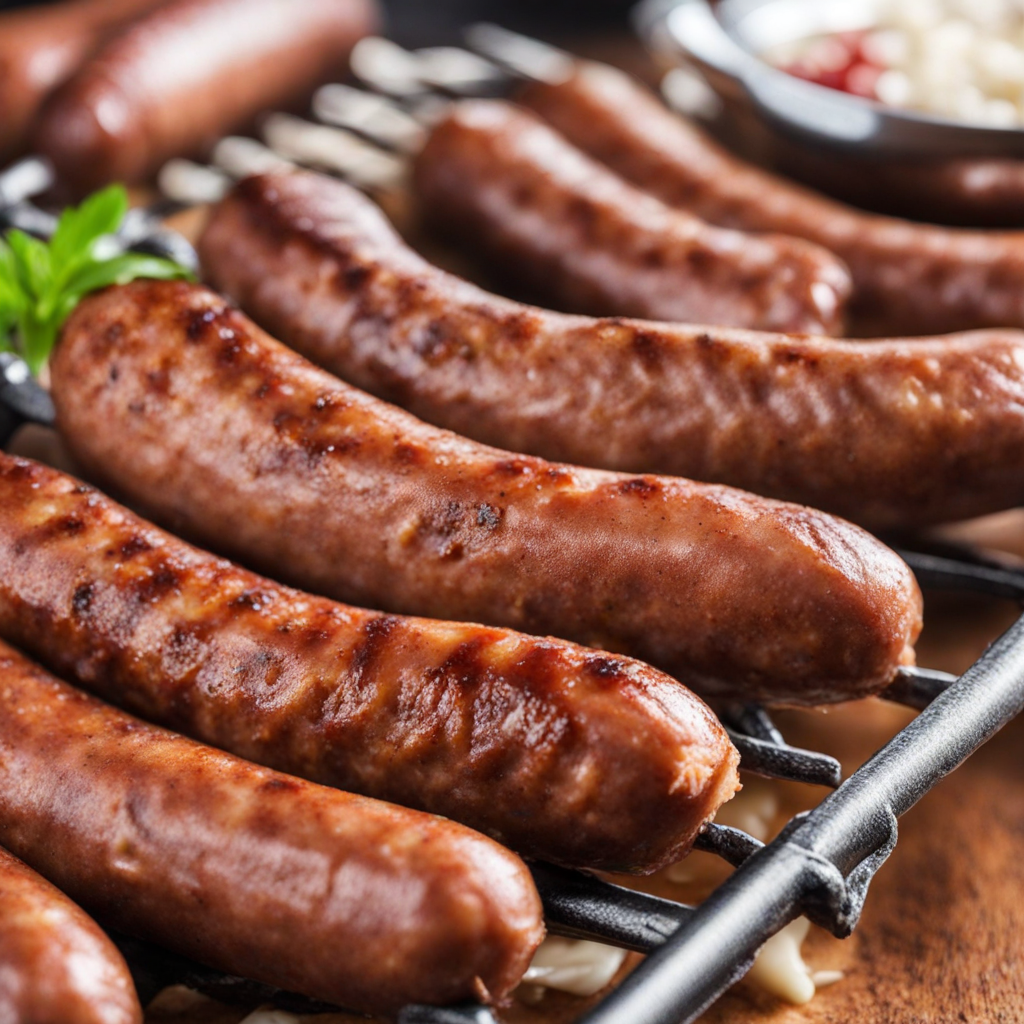Stuffed Mackerel
Stuffed Mackerel is a delectable dish originating from the beautiful archipelago of Seychelles, where the ocean's bounty meets vibrant culinary traditions. The mackerel, a firm and flavorful fish, is typically stuffed with a delightful mixture of local ingredients that reflect the rich flavors of the islands. Common stuffing ingredients include aromatic herbs, spices, and sometimes fresh vegetables or coconut, creating a harmonious blend that enhances the natural taste of the fish. This dish is not just a meal; it's a celebration of Seychellois culture and the island's abundant marine life. When prepared, the mackerel is often grilled or baked to perfection, allowing the skin to crisp up while keeping the flesh tender and juicy. The stuffing infuses the fish with a burst of flavor, making each bite a delightful experience. Accompanied by traditional side dishes such as rice or a fresh salad, Stuffed Mackerel provides a well-rounded meal that is both satisfying and refreshing, perfect for sharing among family and friends during gatherings. The presentation of Stuffed Mackerel is as enticing as its taste, often garnished with slices of lime or lemon for an added zesty touch. The vibrant colors of the stuffing peek through the fish, inviting diners to dive into this coastal culinary delight. As you savor each mouthful, the unique combination of spices and the freshness of the mackerel transports you to the sun-kissed shores of Seychelles, making it an unforgettable taste experience that is sure to leave you craving more.
How It Became This Dish
The History of Makro Farse: A Culinary Treasure of Seychelles #### Origins Makro farse, a beloved dish from the Seychelles, is a fascinating culinary creation that embodies the archipelago's rich cultural tapestry. The Seychelles, an idyllic cluster of 115 islands in the Indian Ocean, is home to a unique blend of influences, drawing from African, French, Chinese, and Indian cuisines. Makro farse, which translates to "stuffed mackerel," is a shining example of this cultural fusion. The origins of makro farse can be traced back to the French colonization of the Seychelles in the 18th century. The French brought with them not only their language and customs but also their culinary practices. The art of stuffing and cooking fish, which is prevalent in many Mediterranean cultures, was likely introduced during this time. Local fishermen, influenced by the French cooking techniques, began to experiment with native ingredients and flavors, leading to the emergence of makro farse. #### Ingredients and Preparation At its core, makro farse features mackerel, a fish abundant in the waters surrounding the Seychelles. The fish is typically cleaned and de-boned, then stuffed with a flavorful mixture of spices, herbs, and vegetables. Common ingredients include garlic, onions, chili peppers, and a variety of local herbs such as coriander and thyme. Some variations might incorporate rice or breadcrumbs as a binding agent, while others may include coconut milk for added richness. The preparation of makro farse involves marinating the stuffed fish, allowing the flavors to meld before cooking. Traditionally, it is either steamed or grilled, often served with a side of rice and a spicy chili sauce, known as "sambal." The dish is not only a testament to the fishing traditions of the Seychellois people but also highlights their resourcefulness in making the most of local produce and fish. #### Cultural Significance Makro farse is more than just a dish; it is a cultural emblem of the Seychelles. Food in the Seychelles is intrinsically tied to the islands' social fabric. The act of preparing and sharing meals is a communal experience, often reserved for family gatherings and celebrations. Makro farse is frequently featured at festive occasions, such as weddings, birthdays, and national holidays, serving as a centerpiece that brings people together. This dish also symbolizes the Seychellois identity, reflecting the islands' history of cultural intermingling. The blend of cooking techniques and ingredients from various cultures mirrors the diverse population of the Seychelles, which includes Creole, Franco-Seychellois, Indian, Chinese, and African communities. As such, makro farse has become a vehicle for cultural expression, demonstrating how food can transcend boundaries and unite people across different backgrounds. #### Development Over Time As the Seychelles has evolved, so too has makro farse. The dish has adapted to changing tastes and dietary trends, incorporating new ingredients and cooking methods while maintaining its traditional roots. In recent years, there has been a growing emphasis on sustainability and the use of fresh, locally-sourced ingredients in Seychellois cuisine. This movement has encouraged chefs and home cooks alike to elevate makro farse by using ethically caught fish and organic produce. The globalization of culinary practices has also played a role in the evolution of makro farse. With the rise of tourism in the Seychelles, international visitors have brought their own culinary preferences and influences. As a result, some chefs have begun to experiment with fusion variations, incorporating elements from Asian or Mediterranean cuisines. These modern interpretations often feature unique marinades or cooking techniques that marry the traditional recipe with contemporary flair. Despite these changes, the essence of makro farse remains intact. It continues to be a beloved dish among Seychellois families and is increasingly gaining recognition on the global stage. Food festivals and culinary competitions in the Seychelles often showcase makro farse as a highlight, allowing chefs to demonstrate their creativity while honoring the dish's heritage. #### A Modern Revival In recent years, there has been a revival of interest in traditional Seychellois cooking, with chefs and food enthusiasts seeking to celebrate and preserve the islands' culinary heritage. This movement has played a crucial role in promoting dishes like makro farse as emblematic of the Seychellois culture. Cooking classes and food tours have emerged, allowing visitors to engage with local chefs and learn how to prepare makro farse themselves. This not only helps to sustain the culinary traditions of the Seychelles but also fosters a greater appreciation for the islands' history and culture. Moreover, social media has transformed the way food is shared and celebrated. Platforms like Instagram and TikTok have enabled chefs and home cooks to showcase their interpretations of makro farse to a global audience. As a result, the dish has gained international recognition, attracting food lovers eager to experience the flavors of Seychelles. #### Conclusion Makro farse is more than just a dish; it is a reflection of the Seychelles' rich history and cultural diversity. Its origins rooted in colonial influences, coupled with the local traditions of fishing and communal dining, have made it a cherished part of Seychellois identity. As the dish continues to evolve, adapting to modern tastes while staying true to its heritage, makro farse remains a culinary treasure that embodies the spirit of the Seychelles. In the heart of every serving of makro farse lies a story—a story of resilience, adaptation, and the unbreakable bonds formed through the shared experience of food. Whether enjoyed by locals during festive gatherings or presented to international visitors, makro farse stands as a testament to the enduring significance of culinary traditions in shaping cultural identity and community ties in the Seychelles.
You may like
Discover local flavors from Seychelles


